|
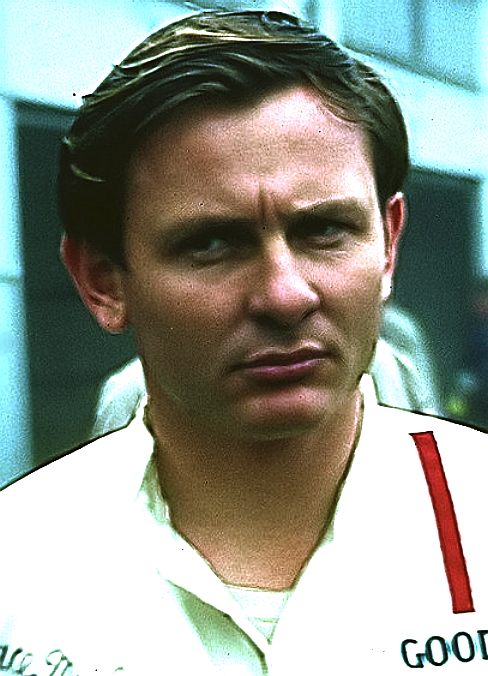
McLaren Racing Limited, trading as Vodafone McLaren Mercedes, is a British Formula One team based in Woking, Surrey, England, United Kingdom. McLaren is best known as a Formula One constructor but has also competed and won in the Indianapolis 500 and Canadian-American Challenge Cup (Can-Am). The team is the second oldest active team (after Ferrari) and one of the most successful teams in Formula One, having won 182 races, 12 drivers' championships and 8 constructors' championships.
The McLaren Group is a diverse organisation, covering
six companies
with high-technology racing and automotive businesses at its core.
McLaren claim that they should seek to minimize their
impact upon the environment. McLaren Group is the hub from which
they
have implemented a range of measures aimed at reducing their carbon
footprint, which may have something to do with their involvement with
Formula E.
HISTORY
Founded in 1963 by New Zealander Bruce McLaren, the team won its first Grand Prix at the 1968 Belgian Grand Prix but their greatest initial success was in Can-Am, where they dominated from 1967 to 1971. Further American triumph followed, with Indianapolis 500 wins in McLaren cars for Mark Donohue in 1972 and Johnny Rutherford in 1974 and 1976. After Bruce McLaren died in a testing accident in 1970, Teddy Mayer took over and led the team to their first Formula One constructors' championship in 1974, with Emerson Fittipaldi and James Hunt winning the drivers' championship in 1974 and 1976 respectively. 1974 also marked the start of a long standing sponsorship by Phillip Morris' Marlboro cigarette brand.
In 1981 McLaren merged with Ron Dennis' Project Four Racing; Dennis took over as team principal and shortly after organised a buyout of the original McLaren shareholders to take full control of the team. This began the team's most successful era: with Porsche and Honda engines, Niki Lauda, Alain Prost and Ayrton Senna took between them seven drivers' championships and McLaren six constructors' championships. The combination of Prost and Senna was particularly dominant—together they won all but one race in 1988—but later their rivalry soured and Prost left for Ferrari. Fellow English team Williams offered the most consistent challenge during this period, the two winning every constructors' title between 1984 and 1994. However, by the mid-1990s Honda had withdrawn from Formula One, Senna had moved to Williams and the team went three seasons without a win. With Mercedes-Benz engines, West sponsorship and former Williams designer Adrian Newey, further championships came in 1998 and 1999 with driver Mika Häkkinen and during the 2000s the team were consistent front-runners, driver Lewis Hamilton taking their latest title in 2008. In 2009 Dennis retired as team principal of McLaren handing the former role to longtime McLaren employee Martin Whitmarsh.
Bruce McLaren Motor Racing was founded in 1963 by New Zealander Bruce McLaren. Bruce was a works driver for the British Formula One team Cooper with whom he had won three Grands Prix and come second in the 1960 world championship. Wanting to compete in the Australasian Tasman Series, Bruce approached his employers, but when team owner Charles Cooper insisted on using 1.5 litre Formula One-specification engines instead of the 2.5 litre motors permitted by the Tasman rules, Bruce decided to set up his own team to run him and his prospective Formula One team-mate Timmy Mayer with custom-built Cooper cars. Bruce won the 1964 series, but Mayer was killed in practice for the final race, prompting his brother and manager Teddy Mayer to become involved with the running of the team. In 1964 and 1965 McLaren were based in New Malden, then Feltham before settling on premises in Colnbrook. During this period Bruce drove for his team in sports car races in the United Kingdom and North America and also entered the 1965 Tasman Series with Phil Hill but didn't win it. He continued to drive in Grands Prix for Cooper but judging that team's form to be waning, decided to race his own cars in 1966.
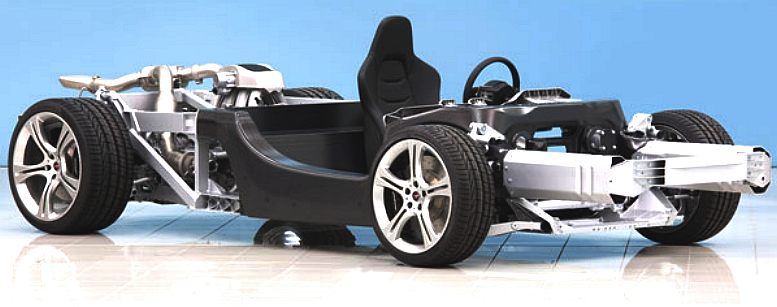
Racing history: Formula One
1960s
Bruce made the team's Grand Prix debut at the 1966 Monaco race (of the current Formula One teams only Ferrari are older). His race ended after nine laps due to a terminal oil leak. The 1966 car was the M2B designed by Robin Herd but the programme was hampered by a poor choice of engines: a 3.0 litre version of Ford's Indianapolis 500 engine and a Serenissima V8 were used, the latter scoring the team's first point in Britain, but both were underpowered and unreliable. For 1967 Bruce decided to use a British Racing Motors (BRM) V12 engine, but due to delays with the engine, was forced initially to use a modified Formula Two car called the M4B powered by a 2.1 litre BRM V8, later building a similar but slightly larger car called the M5A for the V12. Neither car brought great success, the best result being a fourth at Monaco.
For 1968, after driving McLaren's sole entry for the previous two years, Bruce was joined by 1967 champion and fellow New Zealander Denny Hulme, who was already racing for McLaren in Can-Am. That year's new M7A car, Herd's final design for the team, was powered by Cosworth's new and soon to be ubiquitous DFV engine (the DFV would go on to be used by McLaren until 1983) and with it a major upturn in form proceeded. Bruce won the Race of Champions at the Brands Hatch circuit and Hulme won the International Trophy at Silverstone, both non-championship races, before Bruce took the team's first championship win at the Belgian Grand Prix. Hulme also won the Italian and Canadian Grands Prix later in the year, helping the team to second in the constructors' championship. Using an updated 'C' version on the M7, a further three podium finishes followed for Bruce in 1969, but the team's fifth win had to wait until the last race of the 1969 championship when Hulme won the Mexican Grand Prix. That year McLaren experimented with four-wheel drive in the M9A but the car had only a single outing driven by Derek Bell at the British Grand Prix; Bruce described driving it as like "trying to write your signature with somebody jogging your elbow".
1970s
1970 started with a second place each for Hulme and Bruce in the first two Grands Prix, but in June Bruce was killed in a crash at Goodwood while testing the new M8D Can-Am car. After his death, Teddy Mayer took over effective control of the team; Hulme continued with Dan Gurney and Peter Gethin partnering him. Gurney won the first two Can-Am events at Mosport and St. Jovite and placed ninth in the third, but left the team mid-season, and Gethin took over from there. 1971 began promisingly when Hulme led the opening round in South Africa before retiring with broken suspension, but ultimately Hulme, Gethin (who left for BRM mid-season) and Jackie Oliver again failed to score a win. The 1972 season saw improvements though: Hulme won the team's first Grand Prix for two-and-a-half years in South Africa and he and Peter Revson scored ten other podiums, the team finishing third in the constructors' championship. McLaren gave Jody Scheckter his Formula One debut at the final race at Watkins Glen.
The McLaren M23, designed by Gordon Coppuck, was the team's new car for the 1973 Formula One season. Sharing parts of the design of both McLaren's Formula One M19 and Indianapolis M16 cars (itself inspired by Lotus's 72), it was a mainstay for four years. Hulme won with it in Sweden and Revson took the only Grand Prix wins of his career in Britain and Canada. In 1974 Emerson Fittipaldi, world champion with Lotus two years earlier, joined McLaren. Hulme, in his final Formula One campaign, won the Argentinian season-opener; Fittipaldi, with wins in Brazil, Belgium and Canada, took the drivers' championship. It was a close fight for Fittipaldi who secured the title with a fourth at the season-ending United States Grand Prix, putting him three points ahead of Ferrari's Clay Regazzoni. With Hulme and multiple motorcycle world champion Mike Hailwood he also sealed McLaren's first constructors' championship. 1975 was a less successful year for the team: Fittipaldi was second in the championship behind Niki Lauda. Hulme's replacement Jochen Mass took his sole GP win in Spain.
At the end of 1975 Fittipaldi left to join his brother's Fittipaldi/Copersucar team. With the top drivers already signed to other teams, Mayer turned to James Hunt, a driver who biographer Gerald Donaldson reflected on as having "a dubious reputation".
In 1976 Lauda was again strong in his Ferrari; at mid season he led the championship with 56 points whilst Hunt had only 26 despite wins in Spain (a race from which he was initially disqualified) and France. But at the German Grand Prix Lauda crashed heavily, was nearly killed and missed the next two races. Hunt capitalised by winning four more Grands Prix giving him a three-point deficit going into the finale in Japan. Here it rained torentially, Lauda retired because of safety concerns and Hunt sealed the drivers' championship by finishing third. McLaren, though, lost the constructors' championship to Ferrari.
In 1977 the M23 was gradually replaced with the M26, the M23's final works outing being Gilles Villeneuve's Formula One debut with the team in a one-off appearance at the British Grand Prix. Hunt won on three occasions that year but the Lauda and Ferrari combination proved too strong, Hunt and McLaren managing just fifth and third in the respective championships. From there, results continued to worsen. Lotus and Mario Andretti took the 1978 titles with their 78 and 79 ground effect cars and neither Hunt nor Mass's replacement Patrick Tambay were able to seriously challenge with the non ground effect M26. Hunt was dropped at the end of 1978 in favour of Lotus's Ronnie Peterson, but when Peterson was killed by a crash at the Italian Grand Prix, John Watson was signed instead. 1979 saw no improvement; Coppuck's M28 design was described by Mayer as "ghastly, a disaster" and "quite diabolical" and the M29 did little to change the situation. Tambay scored no points and Watson only 15 to place the team eighth at the end of the year.
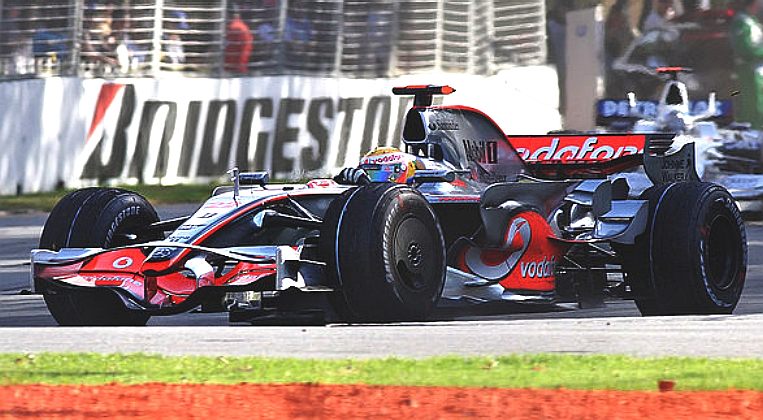
1980s
The 1980s started much as the 1970s had ended: Alain Prost took over from Tambay[38] but he and Watson rarely scored points. Under increasing pressure since the previous year from principal sponsor Philip Morris and their executive John Hogan, Mayer was coerced into merging McLaren with Ron Dennis's Project Four Formula Two team, also sponsored by Philip Morris. Dennis had designer John Barnard who, inspired by the carbon-fibre rear wings of the BMW M1 race cars that Project Four was preparing, had ideas for an innovative Formula One chassis constructed from carbon-fibre instead of conventional aluminium alloy. On their own they lacked the money to build it, but with investment that came with the merger it became the McLaren MP4 (later called MP4/1) of 1981, driven by Watson and Andrea de Cesaris. In the MP4, Watson won the British Grand Prix and had three other podium finishes. Soon after the merger McLaren moved from Colnbrook to a new base in Woking and whilst Dennis and Mayer initially shared the managing directorship of the company, by 1982 Mayer had departed and his and Tyler Alexander's shareholdings had been bought by the new owners.
In the early 1980s, teams like Renault, Ferrari and Brabham were using 1.5 litre turbocharged engines in favour of the 3.0 litre naturally aspirated engines that had been standard since 1966. Seeing the need for a turbo engine of their own, in 1982 Dennis convinced Williams backer Techniques d'Avant Garde (TAG) to fund Porsche-built, TAG-branded turbo engines made to Barnard's specifications; TAG's founder Mansour Ojjeh would later become a McLaren shareholder. In the meantime, they continued with Cosworth engines as old rival Lauda came out of retirement to drive alongside Watson in that year's 1B development of the MP4. They each won two races, Watson notably from 17th place on the grid in Detroit, and McLaren were second in the constructors' title race. As part of a dispute with FISA, the sport's governing body, they boycotted the San Marino Grand Prix. 1983 was not so fruitful but Watson did win again in the United States, this time from 22nd on the grid at Long Beach.
Having been fired by Renault, Prost was once again at McLaren for 1984. Now using the TAG engines, the team dominated, scoring 12 wins and two-and-a-half times as many contructors' points as nearest rival Ferrari. In the drivers' championship, Lauda prevailed over Prost by half a point, the narrowest margin ever. The McLaren-TAGs were again strong in 1985; a third constructors' championship came their way whilst this time Prost won the drivers' championship. In 1986, the Williams team were resurgent with their Honda engine and drivers Nigel Mansell and Nelson Piquet, whilst at McLaren, Lauda's replacement, 1982 champion Keke Rosberg couldn't gel with the car. Williams took the constructors' championship, but for Prost, wins in San Marino, Monaco and Austria combined with the fact that the Williams drivers were taking points from each other meant that he retained a chance going into the last race, the Australian Grand Prix. There, a puncture for Mansell and a precautionary pit stop for Piquet gave Prost the race win and his second title, making him the first driver to win back-to-back championships since Jack Brabham in 1959 and 1960. In 1987 Barnard departed for Ferrari to be replaced by Steve Nichols (who himself joined Ferrari in 1989). In the hands of Prost and Stefan Johansson though, Nichols's MP4/3 and the TAG engine couldn't match the Williams-Honda.
For 1988 Honda switched their supply to McLaren and, encouraged by Prost, Dennis signed Ayrton Senna to drive. Despite regulations reducing the boost pressure and fuel capacity (and therefore, power) of the turbo cars, Honda persisted with a turbocharged engine. In the MP4/4, Senna and Prost engaged in a season long battle, winning 15 of the 16 races (at the other race at Monza, Senna had been leading comfortably but collided with back-marker Jean-Louis Schlesser). At the Portuguese Grand Prix, their relationship soured when Senna squeezed Prost against the pit wall; Prost won but afterwards said, "It was dangerous. If he wants the world championship that badly he can have it." Prost scored more points that year, but due to the fact that only the best 11 results counted, it was Senna who took the title at the penultimate race in Japan.
The next year, with turbos banned Honda supplied a new 3.5 L naturally aspirated V10 engine and McLaren again won both titles with the MP4/5. Their drivers' relationship continued to deteriorate though, especially when, at the San Marino Grand Prix Prost felt that Senna had reneged on an agreement not to pass each other at the first corner. Believing that Honda and Dennis were favouring Senna, Prost announced mid-season that he would leave to drive at Ferrari the following
year. For the second year in succession, the drivers' championship was decided at the Japanese Grand Prix, this time in Prost's favour after he and Senna collided (Senna initially recovered and won the race but was later disqualified).
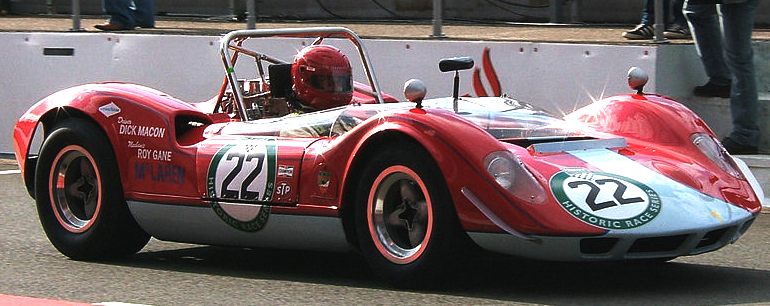
1990s
With former McLaren men Barnard, Nichols and Prost, Ferrari pushed the British team more closely in 1990. McLaren in turn brought in Ferrari's Gerhard Berger but, like the two seasons before, the drivers' championship was led by Prost and Senna and settled at the penultimate race in Japan. Here, Senna collided with Prost at the first corner forcing both to retire, but this time Senna escaped punishment and took the title; McLaren also won the constructors' championship. 1991 was another McLaren and Senna year with the ascendent Renault-powered Williams team their closest challengers. By 1992 Williams, with their advanced FW14B car, had overtaken McLaren breaking their four-year run as champions, despite the latter winning four races.
Honda withdrew from the sport at end of the year and a deal to secure Renault engines fell through so McLaren switched to customer Ford engines for the 1993 season. Senna—who initially agreed only to a race-by-race contract before later signing for the whole year—won five races, including a record-breaking sixth at Monaco and at the European Grand Prix where he went from fifth to first on opening lap. His team-mate 1991 IndyCar champion Michael Andretti fared much worse however; he scored only seven points and was replaced by test driver Mika Häkkinen for the final three rounds. Williams ultimately won both titles and Senna—who had flirted with moving there for 1993—signed with them for the 1994 season. During the 1993 season McLaren took part in a seven part BBC Television documentary called A Season With McLaren.
For 1994, McLaren tested a Lamborghini V12 engine as part of a prospective deal with then Lamborghini owner Chrysler before eventually deciding to use Peugeot engines. Thus powered, the MP4/9 was driven by Häkkinen and Martin Brundle but no wins resulted and Peugeot was dropped after a single year in favour of a Mercedes-Benz-branded, Ilmor-designed engine. But the alliance with Mercedes started slowly: 1995's MP4/10 car was not a front-runner and Brundle's replacement, former champion Nigel Mansell was unable to fit into the car at first and departed after just two races with Mark Blundell taking his place. While Williams dominated in 1996, McLaren, now with David Coulthard alongside Häkkinen, went a third successive season without a win. But then Coulthard broke this run by winning 1997's season-opening Australian Grand Prix and he and Häkkinen won another race each before the end of the year, whilst in August, highly rated designer Adrian Newey joined from Williams. Despite the car's improved pace, unreliability proved costly throughout the season, with retirements at Britain and Luxembourg occurring whilst leading the race.
With Newey able to take advantage of new technical regulations for 1998 and Williams losing their works Renault engines, McLaren were once again able to challenge for the championship; F1 Racing magazine stated that the only way to increase their championship hopes was to hire Ferrari's double champion Michael Schumacher. Häkkinen and Coulthard won five of the first six races, despite the team's system that allowed the rear brakes to be operated individually in order to reduce understeer being banned after a protest by Ferrari at the second race in Brazil. It was Schumacher and Ferrari who provided the greatest competition, the former levelled on points with Häkkinen with two races to go, but wins for Häkkinen at the Luxembourg and Japanese Grands Prix gave both him the drivers' championship and McLaren the constructors' championship. The following season, Häkkinen won his second drivers' championship but due to a combination of driver errors and mechanical failures, the team lost the constructors' title to Ferrari.
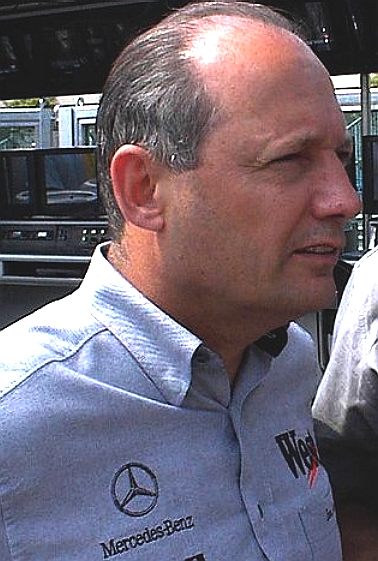
2000s
2000 was not a repeat of recent successes: McLaren won seven races in a close fight with Ferrari, but ultimately Ferrari and Schumacher prevailed in both competitions. This marked the start of a decline in form as Ferrari cemented their position at the head of Formula One. In 2001, Häkkinen was out-scored by Coulthard for the first time since 1997 and retired (ending Formula One's longest ever driver partnership), his place taken by Kimi Räikkönen, then in 2002 Coulthard took their solitary win at Monaco while Ferrari repeated McLaren's 1988 feat of 15 wins in a season.
2003 started very promisingly, with one win each for Coulthard and Räikkönen at the first two Grands Prix. However, they were hampered when the MP4-18 car designed for that year suffered crash test and reliability problems, forcing them to use a 'D' development of the year-old MP4-17. Despite this, Räikkönen scored points consistently and challenged for the championship up to the final race, eventually losing by two points. The team began 2004 with the MP4-19, which technical director Adrian Newey described as "a debugged version of
the MP4-18]." It was not a success though, and was replaced mid-season by the MP4-19B. With this, Räikkönen scored his and the team's only win of the year at the Belgian Grand Prix, as McLaren finished fifth in the constructors' championship, their worst ranking since 1983.
Coulthard left for Red Bull Racing in 2005 to be replaced by former CART champion Juan Pablo Montoya for what was McLaren's most successful season in several years as he and Räikkönen won ten races. However, the unreliability of the MP4-20 cost a number of race victories when Räikkönen had been leading or in contention to win allowing Renault and their driver Fernando Alonso to capitalise and win both titles.
In 2006 the team failed to build on the previous year's good form as the superior reliability and speed of the Ferraris and Renaults prevented the team from gaining any victories for the first time in a decade. Montoya parted company acrimoniously with the team to race in NASCAR after the United States Grand Prix where he crashed into Räikkönen at the start; test driver Pedro de la Rosa deputised for the remainder of the
season. The team also lost Räikkönen to Ferrari at the end of the year.
Steve Matchett argued that the poor reliability of McLaren in 2006 and recent previous years was due to a lack of team continuity and stability. His cited examples of instability are logistical challenges related to the move to the McLaren Technology Centre, Adrian Newey's aborted move to Jaguar and later move to Red Bull, the subsequent move of Newey's deputy to Red Bull and personnel changes at Ilmor.
The 2007 season saw Fernando Alonso, who had been contracted over a year previously, race alongside Formula One debutant and long-time McLaren protege Lewis Hamilton. The pair scored four wins each and led the drivers' championship for much of the year, but tensions arose within the team, some commentators claiming that Alonso was unable to cope with Hamilton's competitiveness. At the Hungarian Grand Prix Alonso was judged to have deliberately impeded his team-mate during qualifying and so the team were not allowed to score constructors' points at the event. Subsequently the McLaren team were investigated by the FIA for being in possession of proprietary detailed technical blueprints of Ferrari's car – the so-called "Spygate" controversy. At the first hearing McLaren management consistently denied all knowledge, blaming a single "rogue engineer". However, in the final hearing McLaren were found guilty and the team were excluded from the constructors' championship and fined $100M. The drivers were allowed to continue without penalty, and whilst Hamilton led the drivers' championship heading into the final race in Brazil, it was Räikkönen in the Ferrari who won the race and the drivers' championship, a single point ahead of both McLaren drivers. In November, Alonso and McLaren agreed to terminate their contract by mutual consent, Heikki Kovalainen filling the vacant seat alongside Hamilton.
In 2008 a close fight ensued between Hamilton and the Ferraris of Felipe Massa and Räikkönen; Hamilton won five times and despite also crossing the finish line first at the Belgian Grand Prix he was deemed to have gained an illegal advantage by cutting a chicane during an overtake and was controversially demoted to third. Going into the final race in Brazil Hamilton had a seven point lead over Massa. Massa won there but Hamilton dramatically clinched his first drivers' championship by moving into the necessary fifth position at the final corner of the final lap of the race. Despite winning his first Grand Prix in Hungary, Kovalainen finished the season only seventh in the overall standings, allowing Ferrari to take the constructors' title.
Before the start of the 2009 season, Dennis retired as team principal, handing responsibility to Martin Whitmarsh. But the year started badly: the MP4-24 car was off the pace and the team was given a three race suspended ban for misleading stewards at the Australian and Malaysian Grands Prix. Despite these early problems, a late revival saw Hamilton win at the Hungarian and Singapore Grands Prix. McLaren signed that year's champion, Jenson Button, to replace Kovalainen alongside Hamilton in 2010.
2010s
Button won twice (in Australia and China) and Hamilton three times (in Turkey, Canada and Belgium), but they and McLaren failed to win their respective championships, that year's MP4-25 largely out-paced by Red Bull's RB6.
Hamilton and Button remained with the team into 2011, with Hamilton winning 3 races – China, Germany and UAE and Button also winning three races – Canada, Hungary and Japan. Button finished the driver's championship in second place with 270 points behind 2011 Driver's Champion Sebastian Vettel of Red Bull Racing, ahead of Hamilton's 227 points. McLaren were second in the constructor's championship to Red Bull Racing.
2012 saw McLaren win the first race of the year in Melbourne, Australia with a 1–3 finish for Button and Hamilton, while Hamilton went on to win in Canada, but by the mid-way mark of the season at the team's home race at Silverstone, the McLaren cars managed only 8th place (Hamilton) and 10th place (Button), while the drivers' and constructors' championships were being dominated by Red Bull Racing and Ferrari, whose cars occupied the first 4 places of the 2012 British Grand Prix, this was partially due to pit stop problems and Button's loss of form after not working as well with the new car as Hamilton and the car not adapting to the Pirelli tyres. The car also suffered reliability problems which cost the team and its drivers numerous potential points, most notably in Singapore and Abu Dhabi where Hamilton had been leading from the front in both races.
Sergio Pérez will replace Hamilton for 2013, with Hamilton replacing Michael Schumacher at Mercedes. The team's car for the season, the MP4-28, was launched on 31 January.
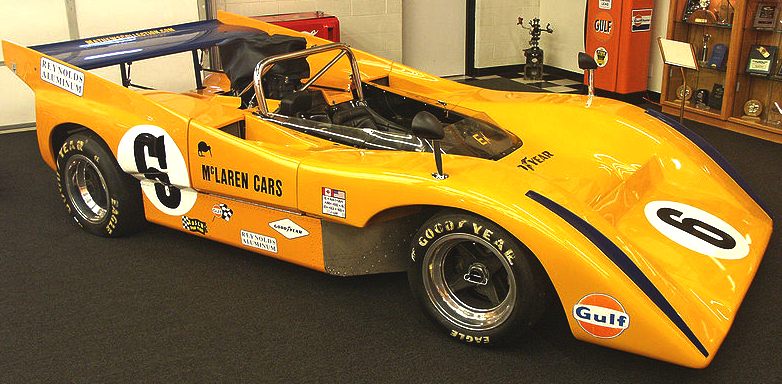
Racing history: other series
Can-Am
McLaren's first sports-racing car was the Group 7 M1 – with a small-block Chevrolet engine in a modified Elva chassis. The car was raced in North America and Europe in 1963 and 1964 in various G7 and USRRC events. For the Can-Am Series, which started in 1966, McLaren created the M3 which Bruce and Chris Amon drove – customer cars also appeared in a number of races in the 1966 season. With the M3, they led two races but scored no wins, and the inaugural title was taken by John Surtees in a Lola T70. The following year Robin Herd purpose-designed the Chevrolet V8 powered M6A, delays with the Formula One programme allowing the team to spend extra resources on developing the Can-Am car which was the first to be painted in McLaren orange. With Denny Hulme now partnering Bruce, they won five out of six races and Bruce won the championship, setting the pattern for the next four years. In 1968 they used a new car, the M8, to win four races—non-works McLarens took the other two—but this time Hulme was victorious overall. 1969 saw McLaren domination become total as they won all eleven races with the M8B; Hulme won five, Bruce won six and the driver's championship. From 1969 onwards, McLaren M12 – the customer "variant" of the M8 – was driven by a number of entrants, including a version modified by Jim Hall of Chapparal fame. McLaren's success in Can-Am brought with it financial rewards, both prize money and money from selling cars to other teams, that helped to support the team and fund the nascent and relatively poor paying Formula One programme.
When Bruce was killed testing the 1970 season's M8D, he was at first replaced by Dan Gurney, then later by Peter Gethin. They won two and one races respectively while Hulme won six on the way to the championship. Private teams competing in the 1970 Can-Am series included older M3Bs as well as the M12 – the customer version of the team's M8B. In 1971 the team saw off the challenge of 1969 world champion Jackie Stewart in the Lola T260, winning eight races, with Peter Revson taking the title. Hulme also won three Can-Am races in 1972 but the McLaren M20 was defeated by the Porsche 917/10s of Mark Donohue and George Follmer. Faced by the greater resources of Porsche, McLaren decided to abandon Can-Am at the end of 1972 and focus solely on open-wheel racing. When the original Can-Am series ceased at the end of 1974, McLaren were by far the most successful constructor with 43 wins.
Indianapolis 500
McLaren first contested the United States Auto Club's (USAC) Indianapolis 500 race in 1970, encouraged by their tyre supplier Goodyear who wanted to break competitor Firestone's stranglehold on the event. With the M15 car, Bruce, Chris Amon and Denny Hulme entered, but after Amon withdrew and Hulme was severely burned on the hands in an incident in practice, Peter Revson and Carl Williams took their places in the race to retire and finish seventh respectively. The team also contested some of the more prestigious races in the USAC championship that year, as they would do in subsequent years. For 1971 they had a new car, the M16, which driver Mark Donohue said "...obsoleted every other car on track..." At that year's Indianapolis 500, Revson qualified on pole and finished second, whilst in 1972, Donohue won in privateer Team Penske's M16B. The 1973 event saw Johnny Rutherford join the team; he qualifed on pole but finished ninth, Revson crashed
out. McLaren won their first Indianapolis 500 in 1974 with Rutherford. The McLaren and Rutherford combination was second in 1975 and won again in 1976. Developments of the M16 had been used throughout this period until the new M24 car was introduced in 1977. The team didn't reproduce their recent success at Indianapolis in 1977, 1978 or 1979, and although they continued to win other USAC races, by the end of 1979 they decided to end their involvement.
Customer cars
Besides the cars raced by the works team, a variety of McLaren racing cars have also been used by customer teams. In their formative years, McLaren built Formula Two, hillclimbing, Formula 5000 and sports racing cars that were sold to customers. Lacking the capacity to build the desired numbers, Trojan was subcontracted to construct some of them. In Can-Am, Trojan built customer versions of the M6 and M8 cars and ex-works cars were sold to privateers when new models arrived; half of the field were McLarens at some races. Author Mark Hughes says that "over 220" McLarens were built by Trojan. In USAC competition and Formula One too, many teams used McLarens during the late 1960s and 1970s. In the mid-1990s, McLaren Racing's sister company, McLaren Cars (now McLaren Automotive) built a racing version of their F1 road car, the F1 GTR which won the 1995 24 Hours of Le Mans and the 1995 and 1996 BPR Global GT Series. More recently, a GT3 version of their new MP4-12C road car was announced, and will be entered by CRS Racing in the FIA GT3 European Championship.
Characteristics
McLaren Racing is part of the McLaren Group which includes five other associated companies; in 2009 the Group was said to have "more than 1300" employees. Since 2004 the team has been based at the McLaren Technology Centre in Woking, United Kingdom. Facilities there include a wind tunnel and a driving simulator which is said to be the most sophisticated in the sport. Their Mercedes engines are built by the car-maker's Mercedes AMG High Performance Powertrains subsidiary (formerly Mercedes-Ilmor) in Brixworth, Northamptonshire.
Ownership and management
Former team principal Ron Dennis is chairman of the Group—a role he resigned from in 2009 before retaking it a year later—and current principal Martin Whitmarsh is chief executive officer. Dennis co-owns the Group along with Techniques d'Avant Garde and Bahrain Mumtalakat Holding Company, a company owned by Bahrain, which has been a minority shareholder since 2007. In 2000 Mercedes's parent company
Daimler (then DaimlerChrysler) bought a 40% share of McLaren which they maintained until 2009 when they bought out the championship winning Brawn team and began to sell back their McLaren stake. By March 2010 Daimler retained 11% of McLaren although they will continue as a sponsor and engine supplier to the team until 2015.
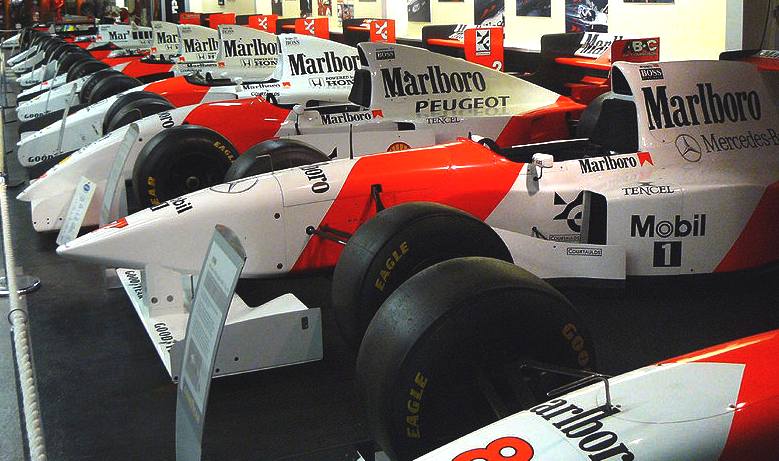
POLITICS
McLaren has had an uneasy relationship with the Formula One's governing body, the
FIA, and its predecessor FISA, as well as with the commercial rights holder of the sport. In the early 1980s McLaren were involved, along with the other teams of the Formula One Constructors Association, in a dispute over control of the sport with FISA and the teams of car manufacturers
Alfa Romeo, Renault and Ferrari. This was known as the FISA-FOCA war and saw a breakaway series threatened, FISA refusing to sanction one race and another race boycotted by FOCA. It was eventually resolved by a revenue sharing deal called the Concorde Agreement. Subsequent Concorde Agreements were signed in 1987 and 1992 but in 1996 McLaren were again one of the teams pitched into dispute over the terms of a new agreement, this time with former FOCA president
Bernie Ecclestone's Formula One Promotions and Administration organisation. McLaren rejected the Concorde Agreement of 1997 before signing a new ten-year agreement in 1998. Arguments over the commercial structure and regulations in the sport restarted in the mid-2000s with McLaren and their part owner Mercedes again amongst teams threatening to start a rival series until 2009 when another Concorde Agreement, effective until the end of 2012, was settled upon. In 2007 McLaren were involved in an espionage controversy after their chief designer Mike Coughlan obtained confidential technical information from
Ferrari. McLaren was excluded from the constructors' championship and fined 100 million US dollars.
Sponsorship, naming and livery
McLaren's Formula One team was originally called Bruce McLaren Motor Racing and for their first season ran white-and-green coloured cars as a result of a deal with the makers of the film Grand Prix.
The most famous livery in the early years was the all-orange one of 1968–1971, also used in Can-Am and at the Indianapolis 500 and revived occasionally for pre-season testing in later years. The
RAC and FIA governing bodies relaxed their rules about on-car advertising in 1968 allowing Lotus to pioneer commercial sponsorship in
Formula One with their Gold Leaf liveried cars. Thus in 1972, the Yardley cosmetics company became McLaren's first title sponsor and the colour scheme changed to a predominantly white one. In 1974, Philip Morris joined as title sponsor through their Marlboro cigarette brand, whilst one car continued to run—ostensibly by a separate team—with Yardley livery for the year. Marlboro's red-and-white branding lasted until 1996, during which time the team went by various names incorporating the word "Marlboro", making it the then longest running Formula One sponsorship (now surpassed by Hugo Boss's 1981–present deal with McLaren). It was then replaced by Reemtsma's West cigarette branding and a silver-and-black livery in 1997, the official name becoming West McLaren Mercedes.
By mid-2005, a European Union directive banning tobacco advertising caused McLaren to end its association with West. For the 2006 season a red-and-silver colour scheme was adopted as they went without a title sponsor and were known simply as Team McLaren Mercedes, before the start of their current deal with
Vodafone in 2007, since then the official team name has been Vodafone McLaren Mercedes. Aside from title sponsors, other current sponsors and suppliers include Diageo (Johnnie Walker whisky brand), Aigo, Aral, Bosch, FedEx, Hugo Boss, H&R, Hilton Hotels, Kenwood, Mazak, Mobil 1, Sandtler, Santander, SAP, Stihl, Lenovo, Sparco, X-Trade Brokers, Reebok, Würth and GlaxoSmithKline (Lucozade brand).
McLaren's early cars were named simply with the letter M followed by a number and sometimes a letter denoting the model. Since the 1981 merger with Project Four, the cars have been called "MP4/x", or since 2001 "MP4-x", where x is the generation of the chassis (e.g. MP4/1, MP4-22). "MP4" stood initially for "Marlboro Project 4", so that the full title of the cars (McLaren MP4/x) reflected not only the historical name of the team, but also the names of the team's major sponsor and its new component part. Since the change of title sponsor in 1997, "MP4" is now said to stand for "McLaren Project 4".
CONTACTS
Tel: +44 (0) 1483 261000
Fax: +44 (0) 1483 261010
Chertsey Road, Woking
Surrey, GU21 4YH
England
RACING
DRIVERS INDEX
|
Berger,
Gerhard
Clark,
Roger
Ferrari,
Enzo
Hakkinen,
Mika
Hamilton,
Lewis
Hill,
Damon
Hill,
Graham
Mansell,
Nigel |
Nick
Ponting
Patrese,
Riccardo
Piquet,
Nelson
Schumacher,
Michael
Senna,
Aryton
Stewart,
Jackie
Surtess,
John
|
Please
click on the links above to find out about these famous automotive
makers. If your company is not included and you would like to be
listed, please let us know.
UK
VEHICLE INSURANCE ONLINE A - Z
No
matter what car, van or bike you drive, we're all looking for great
value and quality in our UK motor insurance? But who is the best
- who is the cheapest and who offers the great service in the event of
a claim?
See
the insurance companies below who claim to offer competitive cover at
sensible prices, our
guide to the jargon and tips for cutting your quote - Good
Luck:-
Automotive
Prehistory Links
CONTACTS
A
taste for adventure
capitalists
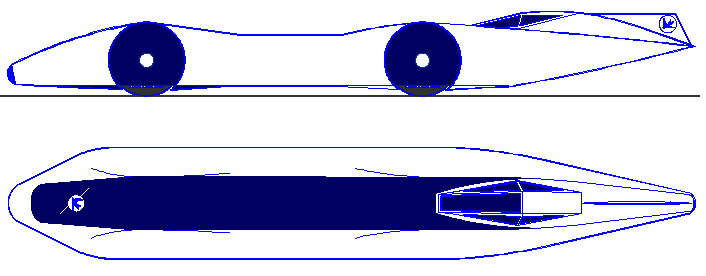
The
world's fastest electric car: 350mph + using energy from nature.
Featuring built in battery cartridge exchange, charged using renewable
solar energy. Sponsors sought for the 2016 season.
|







